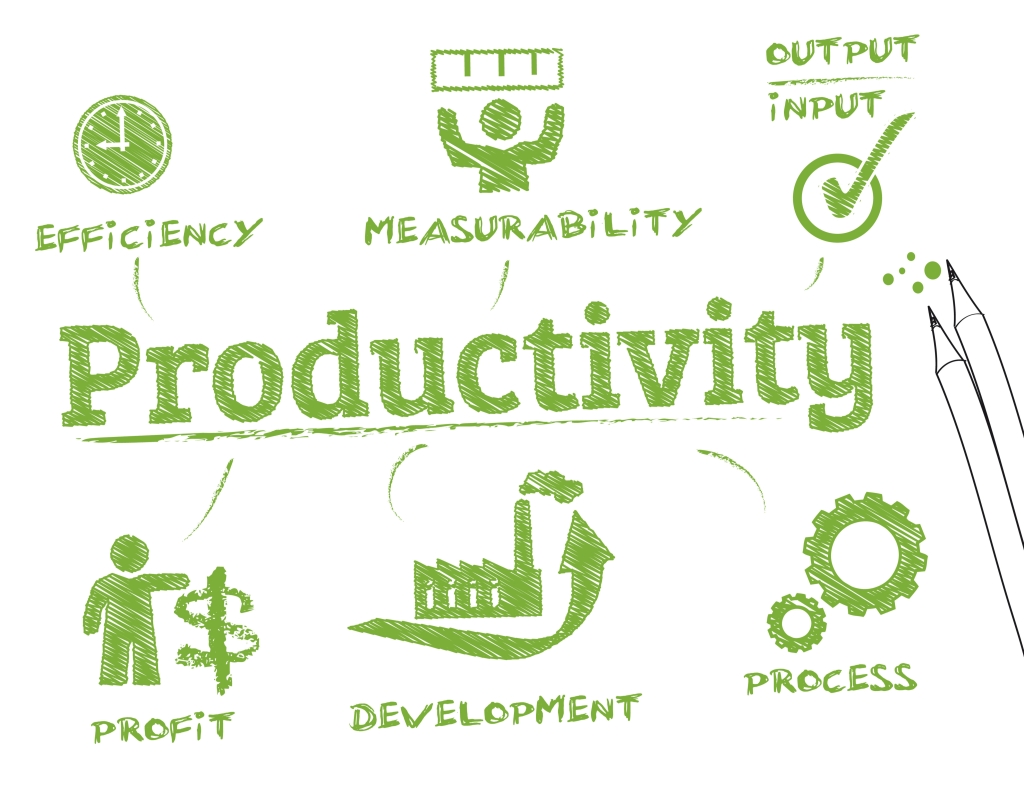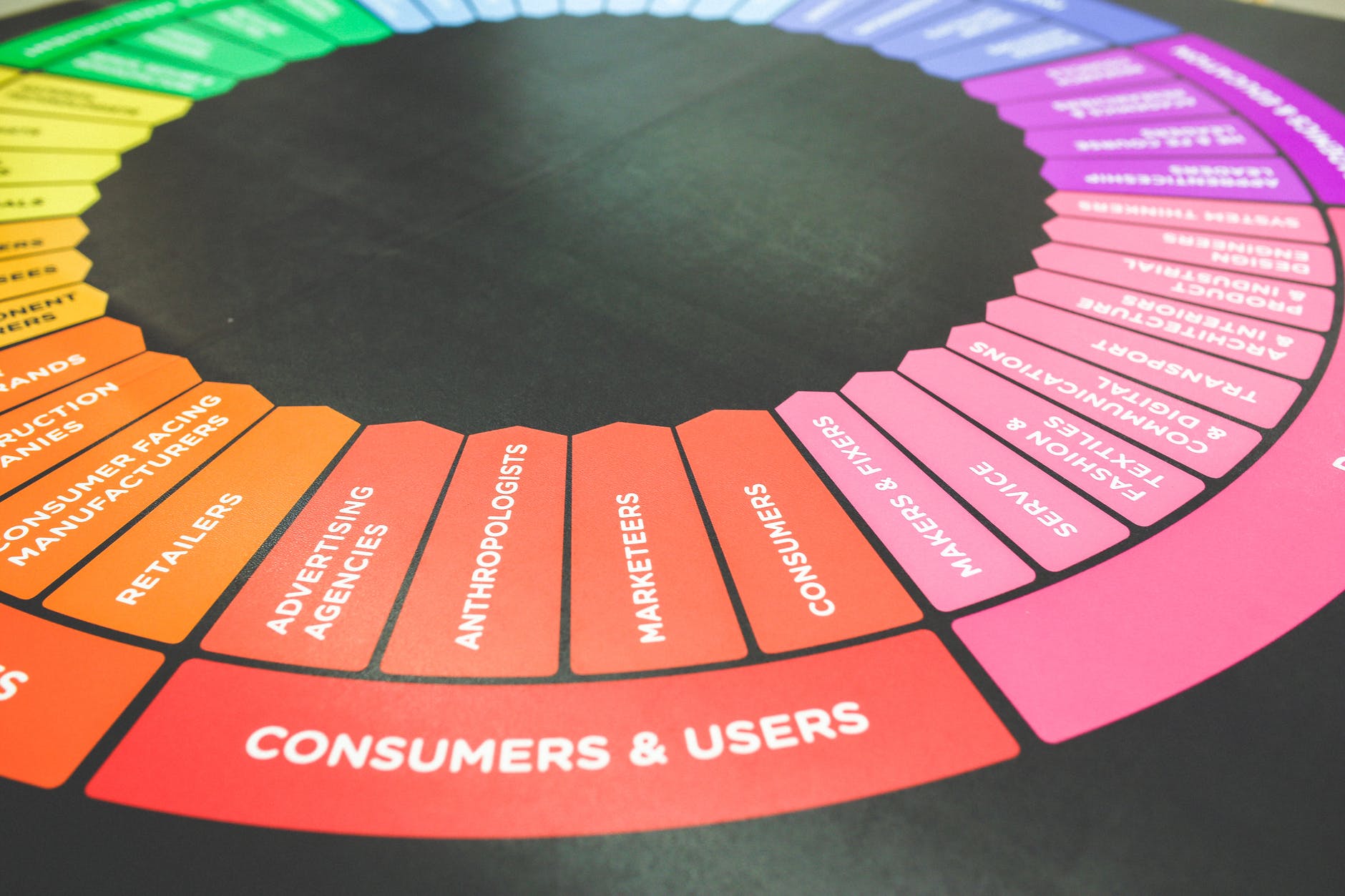Listen on Spotify.

I’ve no experience in marketing. Why then, have I chosen to tackle — or at least touch upon – marketing productivity? After writing my last post, I was in search of another related topic that I thought people might find useful. As the aim of business is to sell products or services, productivity in terms of sales is important to us all. Therefore, I thought it might be interesting —and I hope useful to you — if I looked into this a little more. With that in mind, I forged ahead.
What is marketing productivity?
In marketing, productivity is all about getting the right things done. After all, measuring marketing productivity is pretty vital if you want to drive sales, and the ultimate aim of most marketing is to sell a product or service.
To be truly productive you need to be moving towards achieving the goals you’ve set yourself, right? Eliyahu M. Goldratt, in his excellent book, “The Goal,” writes that productivity is “progress toward the goal.” In other words, simply doing more of something does not increase your productivity. That only means you’re busier.
That’s why measuring productivity is more complicated than simply recording the number of tasks completed. Doing this can give you an idea of the speed of work, but it doesn’t tell you anything about how that work impacts the final outcome. Later, we’ll look at the four key components of marketing productivity. First, let’s look at the goal of improving it.
What is the goal of increasing marketing productivity?
The goal of improving marketing efficiency is to increase outcomes. Outcomes are measurable goals. They may include, to give 3 examples, making more money or creating new leads or users.
For there to be outcomes there have to be resources put into the system. These resources can be defined as, time, goals, people, or tools. We can then decide how we will measure them. Whilst transforming inputs into outcomes, we can assess how efficient that process is. By improving that process, you can boost productivity. For instance, you could improve a process by focusing more attention and resources on projects which are likely to yield a higher return or by increasing output by removing constraints and ensuring constant speed.
The four metrics of productivity
There are 4 elements of productivity, which may be considered vital if you want to create or build upon an effective marketing strategy.
- Input.
- Content. Copy, blog articles, YouTube vids etc.
- Backlinks. That is to say, the number of sites that are linking to your site.
- Marketing campaigns. Online or offline advertising.
- Pageviews. The number of people looking at — and possibly engaging with — your content. This is measurable across multiple channels including your blog, YouTube channel and even your Instagram.
- Traffic. Visitors coming through paid, direct, organic, email or referral channels.
- Cost.
- Customer acquisition cost (CAC). This refers to the cost of obtaining new customers.
- K-factor. The number of conversions/invites that you can used to gauge how well news of your product or service is spreading by word-of-mouth.
- Headcount. Calculating how much it costs to retain your staff.
- Tooling. The amount you pay to supply people with the tools they need to work effectively and efficiently.
- Quality
- Rankings: Organic rankings in search engines, primarily Google.
- Engagement. Number of interactions with your website, in the form of signing up for an email newsletter, for instance.
- Conversion rate. That is, the number of conversions divided by the total number of visitors.
- Customer lifetime value. This is an indication of how good the sales or leads which you attract through marketing are.
- Output
- Earnings. The money made from sales, measured in monthly recurring revenue (MRR) or annual recurring revenue (ARR).
- Leads. How many people sign up for your service or product.
- Number of social shares. The frequency with which your content is shared on social media.
- Share of attention. What proportion of your visitors’ attention can you hold?
- The return on ad spend (ROAS). What is the revenue/cost equation from all your advertising?
These are essential components of productivity, but they don’t exist in a vacuum. Therefore, they depend on the context in which we view them. Later, we’ll look at some ways you could increase marketing productivity. Next though, we’ll look at some factors that can affect it.
5 factors which influence marketing productivity
Just as there are components which make up productivity, so there are factors that affect it. Let’s look at 5 of the most important.
Time
This is the biggest factor. Not time that goes into working on the marketing itself; that time is a form of input. Rather, it’s the measurement of productivity over time which can affect the marketing itself — or, at the very least, our perception of it. After all, If you measure productivity over a week rather than over a year, you might see different rates and outcomes due to natural fluctuations, like seasonality or paid time off.
Business or Monetisation Model
This is essentially about how a company makes its money. Marketing productivity is hugely affected depending on how an organisation makes money. It makes a big difference whether a company makes money through, subscriptions, licensing, advertisement or transaction. You might wonder why this is important. Well, the job of marketing is to drive sales, and the way you determine the number of sales made depends on how those sales are defined. For a company like Spotify, with a subscription-based model, marketing has an impact on a buyer’s decisions from the beginning to the end, and this has a much greater influence on the whole business.
Cost
One aspect of productivity which is not often talked about is cost. You can, of course, easily increase productivity by hiring more staff. However, that may reduce your profit margins because you have a higher headcount. In marketing, costs come from headcount, marketing assets, and advertising.
The Situation of Individual Businesses
We may be in danger of stating the obvious here, but how you view your marketing productivity depends — to a large extent — on what situation your business is in. A start-up that’s growing rapidly may be much more concerned about user engagement and growth than it is about costs. By the same token, an established organisation may care much more about cost-effectiveness because they already have a substantial share of the market.
Market Conditions
Market conditions can also have an immense impact on marketing productivity. The Covid-19 pandemic is a strong recent example. Mask, glove, and hand sanitiser manufacturers got a huge boost when global demand for their products increased. In this situation, marketing productivity increases because the cost is reduced. On the other end of the spectrum, in the 2008 mortgage crisis, a bank’s marketing productivity would have lessened because they faced the challenge of increased public scepticism during that time.
It’s time to look into some ways you can improve marketing efficiency.

Ways to increase marketing productivity
We’ve seen some of the influences marketing productivity is subject to. There are also many ways you can go about improving it. Here are some of the ones I’ve found.
- Hire more marketers.
This is the easiest way to increase productivity. More people can help you achieve a goal faster or they can take more on.
2. Alter your goals.
Marketing productivity may be gauged as progress that is made towards a goal. If that is so, changing your goals can increase productivity. The new goals don’t necessarily need to be lower. You may instead choose to set narrower goals or extend the timeframe in which you have to achieve them. Make the goals you set are more specific so that they’re attainable.
3. Devote more resources to what’s working.
This may serve as an alternative to hiring more people. Instead of getting more resources, you can assess how efficiently existing ones are used and redistribute them to projects which offer bigger opportunities or increased returns.
By the same token, if reallocating people and teams to different projects or channels will make faster progress, it too can increase productivity. You can also do this by changing someone’s scope to something they are more familiar with.
4. Invest in useful tools that help you work more efficiently.
It’s true that ineffective tools can create bottlenecks which can impair productivity. At the same time, the right tools, used well, can prove valuable aids. Say that you want to increase your input, you might subscribe to a design platform that allows you to easily create graphs.
5. Work to resolve bottlenecks and remove constraints.
Most processes have bottlenecks that can be eased by creating more efficient workflows or devoting more resources to them. By exposing and easing hidden bottlenecks you can boost marketing productivity.
6. Devise uniform workflows.
According to the economics of scale, repeating the same processes leads to increased efficiency. After all, if you’ve done something before, you can usually do that same thing faster the second time. If everyone can follow similar processes marketing productivity is likely to increase.
Summary
Marketing productivity, then, is formed of 4 components, input, quality, cost, and output. I hope you have a fuller understanding of how to measure marketing productivity, control the factors influencing it, and how you can make effective changes. Soon, you’ll be making changes that will increase marketing productivity in your businesses, boost efficiency and bring more profit too!

One thought on “Marketing Productivity: How Can You Improve It?”